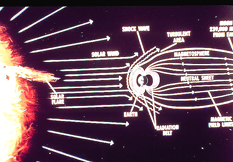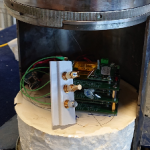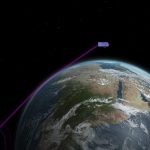 Diagram of solar flare effects (NOAA)
Diagram of solar flare effects (NOAA)An Atlas 5 rocket sent NASA’s Solar Dynamics Observatory (SDO) up on February 11 on an $850 million, five-year mission to find out more about the sun’s magnetic field activity and space weather and, hopefully, to improve forecasting enough to make it possible to safeguard GPS and other technologies.
An Atlas 5 rocket sent NASA’s Solar Dynamics Observatory (SDO) up on February 11 on an $850 million, five-year mission to find out more about the sun’s magnetic field activity and space weather and, hopefully, to improve forecasting enough to make it possible to safeguard GPS and other technologies.
From now through the climax of Solar Cycle 24 in 2011-12, solar flares and magnetic storms may play havoc with GPS signals by making them unavailable for a period of time or causing serious errors in signal data. They could even disable the satellites themselves. (The GNSS Solutions column in the forthcoming March/April issue of Inside GNSS describes how scientists predict solar activity and its affect on GNSS signals.)
What that means for GPS users ranges from minor inconvenience to life-threatening disruption. Satellites could slow down or fall out of orbit, pilots on polar flights could be forced to avoid the entire area because of radiation and GPS signal blackout, ships and planes and floating oil rigs might not be able to count on the data they receive, motorists in as much as half the world could be without a working SatNav device for a time – or without an ATM.
Space weather can even affect migratory animals that depend on magnetic fields to navigate.
Researchers would like to be able to say with 90 percent certainty that a flare will occur in the next 12 to 24 hours. Right now, observers have to see the visible flare before they can prepare for its effect – and that means the charged particles are already on their way to Earth.
The SDO will reach geosynchronous orbit 22, 300 miles from earth, where instruments on the spacecraft will transmit images of the sun continuously at a resolution much higher than HD TV. They will be sent to a new 18-meter radio antenna at White Sands Space Harbor in Las Cruces, New Mexico.





